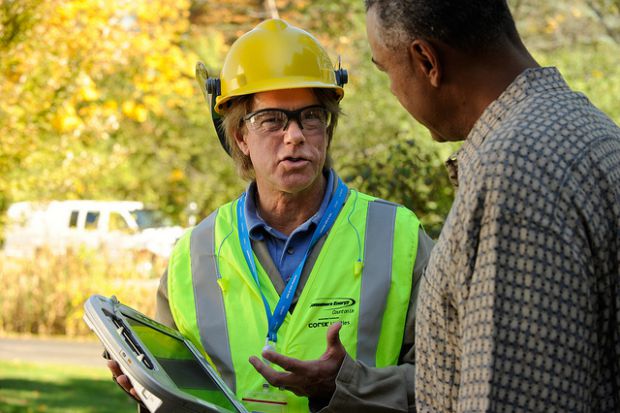Former EPA Administrator Lisa Jackson once named energy efficiency the “silent hero” in the climate crisis. Republican Governor Butch Otter of Idaho called efficiency the “low hanging fruit in the energy orchard.” We know that a key way to reduce our climate pollution is to reduce our energy demand. By reducing energy use, we also save money on our utility bills. So why are there still barriers to homeowners embracing deep energy efficiency?
Cities around the country and here in the Northwest are working to achieve significant cuts to global warming pollution, and a key way is to reduce the collective energy consumption of both homes and commercial buildings. For example, in order to meet its goal of carbon neutrality by the year 2050, Seattle has to get on a pathway of zeroing out natural gas use for heat. A group of leading King County cities, including Seattle, have also adopted a joint climate agenda with a commitment to 25% reduction in building sector energy use by 2030, covering both fossil-sourced electricity and natural gas.
Over the past year, New Energy Cities researched what it would take for King County cities to achieve the 25% reduction goal in the residential sector. We interviewed the administrators of residential retrofit programs across Washington and Oregon, examining the biggest barriers to meeting that goal as well as promising practices to move forward. We look at those barriers and the solutions needed, in our new briefing paper Breaking Down Barriers to Deep Energy Efficiency in King County.
The path is known but not easy. Local officials face several barriers in getting homeowners to achieve deep home energy efficiency:
- Most energy efficiency programs have not delivered a high volume of deep energy efficiency upgrades (i.e., retrofits that lead to 50% or greater energy use reduction). There are a variety of reasons, but for one it is challenging to persuade homeowners to make front-end investments to their homes. Climate action and efficiency are often not sufficient on their own—or even as leading messages—to attract homeowners to pay for deep upgrades.
- In the absence of federal stimulus funding or revenue from accounting for the cost of carbon in our economy, public and utility funding levels are insufficient to support a robust residential energy efficiency market. Without public dollars to support the programs, cities have struggled to provide attractive incentives for homeowner participation, and to retain a strong contractor base.
- Local policymakers and real estate market actors lack visibility into the most strategic actions to drive home efficiency in their communities. Many local officials do not have access to utility data, or understand how to use energy information—as in real estate transactions—to drive greater demand for energy efficient homes.
- Existing policies and programs do not sufficiently prioritize carbon reduction or deep efficiency in retrofits. A number of King County cities have incentives for new green home construction, but many cities have significant room for improvement in reducing electricity and natural gas use in existing homes.
However, home efficiency and building leaders across the Northwest and the U.S. have developed innovative and promising ways to move forward. We can see many bright spots that indicate ways to break down these barriers:
- To drive demand, a Washington, DC mayoral task force recommended that the District establish minimum energy performance standards for existing buildings, beyond codes for new buildings, and explore a carbon pricing system—as Tokyo, Japan did—that “would give building owners greater incentive to reduce their energy use.”
- California and Northeastern Regional Greenhouse Gas Initiative states have directed billions of dollars in carbon pricing revenue to local energy efficiency and clean energy programs. Boulder, CO residents voted twice to approve their own carbon tax, which similarly funds local efficiency and renewable energy efforts.
- Incorporating energy efficiency information in home sale listings is another promising approach to drive demand. Nationally, the Green Multiple Listing Service Tool Kit provides resources to do this, and the Appraisal Institute has developed a tool to support home appraisers in their valuation of property energy efficiency. Locally, green building leaders have worked with realtors and appraisers to incorporate information about energy efficiency and other green home features into the Northwest Multiple Listing Service database. More work is necessary to make full use of home energy information, however, including more extensive data-sharing with energy utilities and greater collaboration with the home real estate community.
It is clear that a single policy or voluntary program alone will not do the job of achieving deep home efficiency widely enough to meet the region’s carbon commitments. For cities to lead in cutting energy demand and reducing climate pollution will require that silent hero of energy efficiency, including both incentives and requirements at a greater scale than ever before.
Read the full report: Breaking Down Barriers to Deep Energy Efficiency in King County





